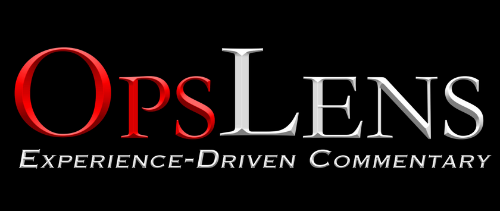All you need to stop a bad guy with a gun is a good guy with a gun, some will argue. Unsurprisingly, in the wake of the Thousand Oaks shooting, which left 12 people dead, many have been calling for armed security guards. Why? For one, an unarmed security guard was shot by the Thousand Oak perp. Some believe that had he been armed, the guard could have stopped the shooter.
Early Sunday morning, we saw something just like that unfold in the Chicago suburbs. After a group of men was forced to leave Manny’s Blue Room Bar in Robbins, Illinois, one man returned with a gun. He opened fire, injuring several people inside.
Fortunately for Manny’s staff and patrons, an armed security guard was on hand. Jemel Roberson, 26, returned fired and was able to subdue and restrain the shooter. That’s when the cops showed up. Early reports indicate that Roberson had the perpetrator pinned to the ground, with a gun pointed at the man’s back.
The responding police officers misread the situation, believing Roberson to be the shooter. One officer opened fire, ultimately killing the heroic security guard. According to eyewitness reports, people were screaming at the cops that Roberson was security. It’s unclear if this occurred before or after the police opened fire.
The incident calls into question whether armed security guards really are the answer to armed shooters. President Trump has called for arming teachers, and many have been advocating for armed security guards at high-risk locations. In this case, Roberson proved that a good guy with a gun can stop a bad guy with a gun. Unfortunately, Roberson lost his life doing so.
In such situations, police officers have less than a split second to make a decision. Regrettably, in this case the responding officer made the wrong decision, costing a hero his life. The incident also calls into question whether armed security guards and armed civilians (say teachers) really are the right solution to America’s mass shooting epidemic.
Imagine police officers showing up to a movie theater, school, or somewhere else to find numerous people exchanging gun fire. How are they supposed to know who the good guys and bad guys are? Police officers can identify themselves via uniforms and badges. Citizens lack both.
If you see two people in plain clothes exchanging gunfire, it’s going to be difficult separating who’s trying to be a hero and who’s trying to commit a crime. Further, if multiple armed citizens respond to an armed shooter, are they likewise going to be able to keep the situation straight? Don’t be surprised if a future story highlights how one armed would-be hero citizen shot another armed hero citizen.
As for Roberson, his heroic act resulted in his death. It’s hard not to feel some empathy for the officer who shot Roberson, he (or she) likely felt that his life was at risk. At the same time, it’s fair to wonder if better training or selecting candidates who are calmer under pressure would have prevented Roberson’s death. Some have also called accountability into question, with police routinely not being convicted after shooting innocent individuals.
Race also comes into play. Roberson was a law student, avid churchgoer and apparently aspired to be a police officer himself. He was also black. A study has found that police officers use force against African Americans more often than against whites and other groups. Civil rights activists and others also allege that police are quicker to pull the trigger when the person at the end of their barrel is African American.
While we shouldn’t jump to conclusions, it’s fair to wonder if Roberson would still be alive if he were white. This raises an interesting angle to arming security guards and other non-LEOs. Will armed African Americans be more at risk? Either way, no matter how you cut it, arming non-LEOs may not be as easy as it seems.
















